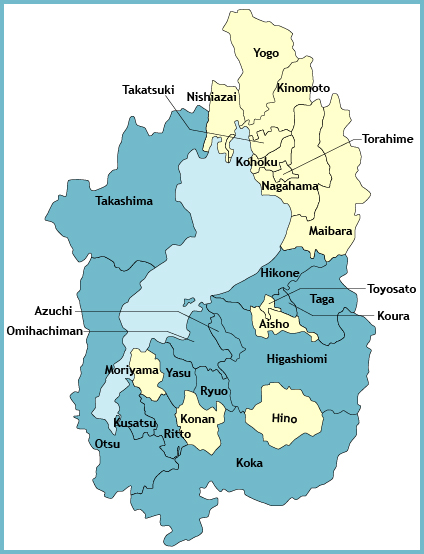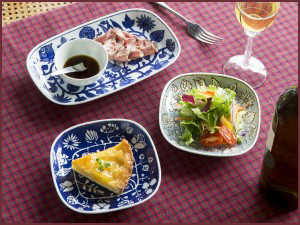[ . BACK to Daruma Museum TOP . ]
::::::::::::::::::::::::::::::
Shiga Prefecture 滋賀県 Fudo Myo-O

The capital is the city of Otsu 大津.
..............................
. Enman-In Monzeki 円満院門跡 / 圓満院 .
滋賀県大津市園城寺町33, - 33 Onjojicho, Ōtsu, Shiga
Enryaku-Ji Hieizan 比叡山延暦寺 - 不動明王二童子像
. Saicho, Dengyo Daishi 伝教大師最澄 and Hieizan .
. Ishiyamadera 石山寺 .
Otsu, Shiga
..............................
. Katsuragawa 葛川息障明王院
Katsuragawa Sokusho Myo-O In .
滋賀県大津市葛川坊村町155 / Otsu, Katsuragawa Bomuracho 155
and
Mudooji 無動寺明王堂 Mudo-Ji Fudo-Do
滋賀県大津市坂本本町4220 / 4220 Sakamotohonmachi, Otsu
and
建立大師相応和尚 Priest Konryu Daishi So-O Kasho (833 - 918)
..............................
. Kiyomizu no taki 清水の滝 waterfall .
佐賀県小城市清水の滝 Shiga prefecture, Ogi Town
..............................
Kongoorinji, Kongōrin-ji 金剛輪寺 Kongorin-Ji
滋賀県愛知郡愛荘町松尾寺873
874 Matsuoji, Aisho Town, Echigun, Shiga
- quote -
Kongourinji Temple is one of the three Koto Sanzan temples of the Tendai Sect.
The main temple is a Japanese style building representative of the Kamakura period (1192 to 1333) and a designated National Treasure. The gardens, which were created from the Azuchi-Momoyama period (1573 - 1603) to the middle of the Edo period (1603 - 1868), are a designated place of Scenic Beauty.
- source : en.biwako-visitors.jp -
at Jooshooan 常照庵 Josho-an

Statue from the Kamakura period.
Fudo is 108.5 cm high,

the statues at his side
矜羯羅童子 Kongara Doji - 54.2cm
制吨迦童子 Seitaka Doji - 29.9cm
..............................
. Namura Jinja 苗村神社 Namura Shrine .
滋賀県蒲生郡竜王町大字綾戸467 / 467 Ayado, Ryuo-cho, Gamo-gun, Shiga
. Shoobooji 正法寺 Shobo-Ji .
滋賀県大津市石山内畑町82 / 82 Ishiyamauchi hatachō, Ōtsu-shi, Shiga
. Shoomyooji 正明寺 Shomyo-Ji .
滋賀県蒲生郡日野町松尾 - Matsuo town, Shiga
..............................
Tomikawa Magaibutsu 富川磨崖仏 Tomikawa Cliff Buddha
滋賀県大津市大石富川町

The statue is of 阿弥陀如来 Amida Nyorai. Water dripping down near his ear for years has changed the color and the local people call it
mimidare Fudo 耳だれ不動 "Fudo with hanging earlobes".

Made in the Kamakura Period.
. Magaibutsu 磨崖仏 stone carvings .
..............................
Zensuiji 善水寺 Zensui-Ji
滋賀県湖南市岩根3518 / 3518 Iwane, Konan, Shiga

Statue from the Heian period.
Made from one piece of kaya wood カヤ材の一木造り (Torreya nucifera). 73 cm high.
It is most probably from the year 993, when the statue of Yakushi Nyorai was made.
- quote -
The main hall of Zensuiji Temple is a designated National Treasure, and one of the three Konan Sanzan temples.
It is a popular spot in the fall, when wonderful crimson leaves can be seen. The interior also features no less than 15 Buddha statues, including representative pieces from the Tempyo period (710 - 794) and the Heian period (794 - 1185), all of which are more than worth making the trip to see them.
- source : en.biwako-visitors.jp/spot -
This temple also belongs to the
. Pilgrimage to 49 Temples of
Yakushi Nyorai in Western Japan
西国四十九薬師巡礼 .
Nr. 47 - 第47番 医王山 善水寺 Zensui-Ji 滋賀県湖南市

- reference and more photos : kanagawabunnkaken.web.fc2.com -
- Homepage of the temple
- reference source : www.zensuiji.jp -
::::::::::::::::::::::::::::::
. Kinki 近畿三十六不動尊霊場
Kinki Pilgrimage to 36 Fudo Temples .
25. 円満院門跡 / 圓満院 Enman-In Monzeki . Shiga
26. 無動寺明王堂 Mudo-Ji, Myo-O Do - Shiga (Otsu)
27. 葛川息障明王院 Katsuragawa Sokusho Myo-O In - Shiga (Otsu)
- photos and reference : biwako-visitors.jp/
::::::::::::::::::::::::::::::

. - Join Fudo Myo-O on facebook - Fudō Myō-ō .
::::::::::::::::::::::::::::::
. Pilgrimages to Fudo Temples 不動明王巡礼
Fudo Myo-O Junrei - Fudo Pilgrims .
[ . BACK to WORLDKIGO . TOP . ]
[ . BACK to DARUMA MUSEUM TOP . ]
- - #shigaprefecture #shigafudo - -
::::::::::::::::::::::::::::::
--
Posted By Gabi Greve to Fudo Myo-O - Introducing Japanese Deities at 11/24/2016 04:41:00 PM






























